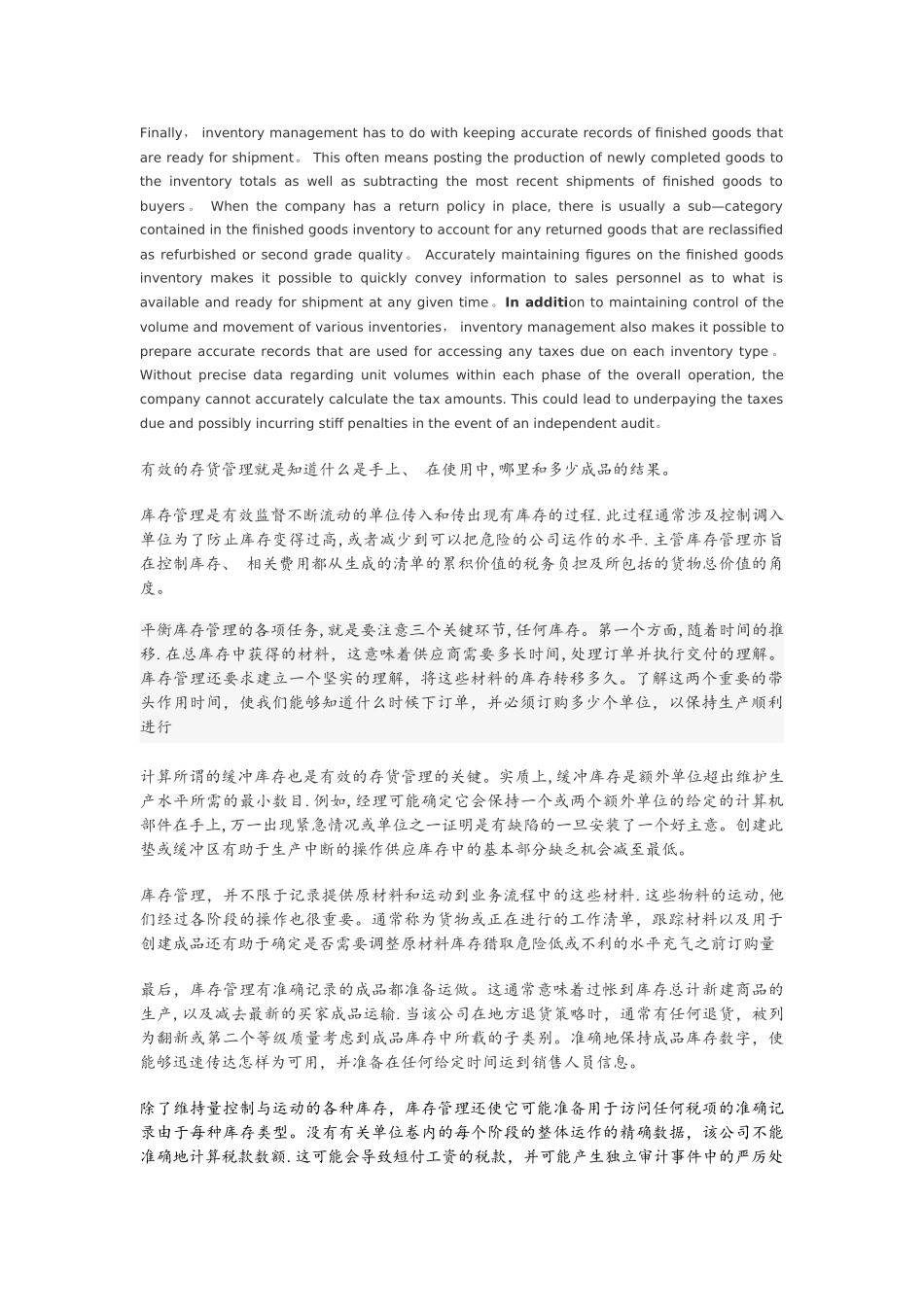What is Inventory Management?什么是库存管理?Effective inventory management is all about knowing what is on hand, where it is in use, and how much finished product results.Inventory management is the process of efficiently overseeing the constant flow of units into and out of an existing inventory 。 This process usually involves controlling the transfer in of units in order to prevent the inventory from becoming too high, or dwindling to levels that could put the operation of the company into jeopardy. Competent inventory management also seeks to control the costs associated with the inventory, both from the perspective of the total value of the goods included and the tax burden generated by the cumulative value of the inventory。Balancing the various tasks of inventory management means paying attention to three key aspects of any inventory. The first aspect has to do with time 。 In terms of materials acquired for inclusion in the total inventory, this means understanding how long it takes for a supplier to process an order and execute a delivery 。 Inventory management also demands that a solid understanding of how long it will take for those materials to transfer out of the inventory be established. Knowing these two important lead times makes it possible to know when to place an order and how many units must be ordered to keep production running smoothly。Calculating what is known as buffer stock is also key to effective inventory management 。 Essentially, buffer stock is additional units above and beyond the minimum number required to maintain production levels。 For example, the manager may determine that it would be a good idea to keep one or two extra units of a given machine...


